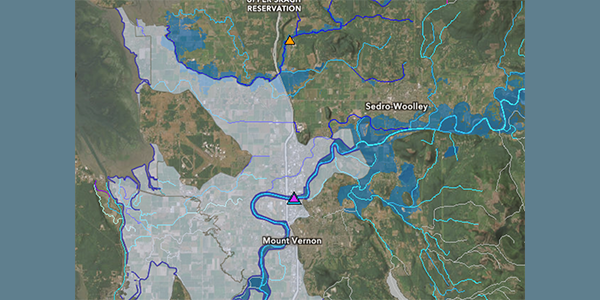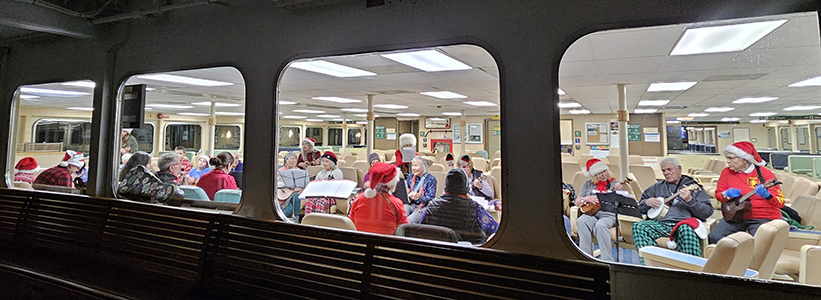Special Meeting of EPRC on Monday, Sept. 14 at 3 p.m. at Eastsound Fire Hall
— by Margie Doyle —
The Eastsound Planning Review Committee (EPRC) agreed at is regular monthly meeting yesterday, Sept. 10, to hold a special meeting on Monday Sept. 14 to revise the Land Use Tables of the Eastsound Subarea Plan (ESAP) update, in order to present the changes to the County Council, which meets on Orcas on Tuesday, Sept. 15.
Before getting to the “meat” of their monthly meeting — fine-tuning their response to the Planning Commission’s minutes of their Aug. 21 and 25 meetings on Orcas — EPRC members Greg Ayers, Clyde Duke, Martha Fuller, Ken Katz, Fred Klein and Bob Maynard heard public comment from John Campbell. Campbell is an architect, founder of Homes for Islanders, a member of the Eastsound Design Review Committee, and a long-time follower of the Eastsound Subarea Plan update process.
After bringing up concerns with the Parking Fund ( which County Senior Planner Colin Maycock pointed out “doesn’t exist as a fund, it’s just text in the plan”); Campbell also referenced:
- the process for appealing Eastsound Design Review Committee decisions;
- the Eastsound Waterfront Access plan (which Maycock said is referenced in the ESAP, but is part of the County’s Shoreline Master Plan);
- and the need for distinction between urban and rural uses in the table of land uses (Campbell noted that Eastsound Rural and Eastsound Rural Residential are in the same column.)
After agreeing to discuss Campbell’s concerns following the review of the Subarea Plan as updated by the Planning Commission, the members of the EPRC then went over the findings point by point.
1) They concurred with the Planning Commission’s approval of the “Fern Street Extension/Public Works lot” as a Transportation Hub. However, later in the meeting, they voted to retain the descriptor “for non-motorized transport” rather than the descriptor “for multi-modal transport” as proposed by the Planning Commission.
2) They also concurred with re-designating the seven lots facing Main Street east of the Washington Federal Bank as “Village Commercial.”
3) Likewise, the EPRC advised changing 41 residential lots west of the airport between Seaview and Blanchard Streets from Village residential, to Eastsound Residential. The density remains the same minimum 4-, maximum 12-units per acre, but the allowable uses would be changed.
4) The EPRC disagreed with the Planning Commission recommendation that Port of Orcas property at the northwest corner of Mt. Baker and North Beach roads be all designated Service Light Industrial. Instead, the EPRC stated, “We wish the lot to remain split as it is (Village Residential and Service Light Industrial) and to state in the policies section of the EASP that, when necessary to preserve the village character, split zoning be allowed in an urban area.”
While Maycock pointed out that as the property abuts a main road, “it already has the requirement of a 20-ft. landscaping strip that provides some screening of whatever use is there; ” Fred Klein noted that this situation is an example of a Planning Commission in a rural county needing to consider different perspectives as areas become “urbanized.”
Klein emphasized, “We wish the lot to remain split as is and add to the goals and policies portion [of the ESAP] a goal that, when necessary to preserve the village character, split zoning be allowed in an urban area.”
5) The EPRC made a similar recommendation on the Bartell Road split parcel, which now has three zones: rural, Eastsound residental and rural residential. The original Planning Department report advised that all the parcels be zoned either rural or rural residential. Again, the EPRC recommended split zoning
6) At first the EPRC as a body agreed with the Planning Commission to allow access to a retail “convenience” store in the Marina District from North Beach Road. However, increased traffic and traffic congestion was brought up and the EPRC members discussed the advisability of objecting to something they had formerly agreed to. The advisory committee agreed however that as individuals, they can present their objections to the County Council.
7) The EPRC supported the elimination of sliding scale permit provisions.
8) The EPRC re-iterated its approval of informational kiosks only in three specific zones: Eastsound village, airport and marina. They objected to the addition of retail kiosks as an allowed use. EPRC member Bob Maynard said, We should no kiosks. To me they’re a negative environment in the community.” EPRC member Martha Fuller objected saying, “If there’s a seasonal demand, we should at least contemplate meeting that demand.”
EPRC Co-Chair Clyde Duke said that the EPRC had not decided about the allowable uses of kiosks; “We can discuss the merits if we pick a focus and create further opportunities for public and Chamber [of Commerce] input.
The committee agreed about disallowing retail kiosks, but committed to review that proscription next year.
Before moving on to a discussion of Campbell’s points and preliminary review of projects, the EPRC approved of the “Errata” section, where simple corrections such as numbering were addressed, and Co-Chair Greg Ayers thanked Maycock for his close reading and proofing of the documents.
Although a Parking Plan and a Parking Fund are noted in the original ESAP, there is nothing backing them up. Maynard questioned why there isn’t a parking plan, nor “a mechanism for making it work.” Klein proposed reinserting the sections in the plan, saying, “Its presence in the plan has the use of calling attention to the fact that parking is an issue.”
The majority of the EPRC agreed with Klein’s motion.
They then discussed a protocol for addressing EDRC reviews, decisions and appeals. Campbell said, “Who’s governing who? The EDRC is supposed to be people who understand the goals and the plan and they’re making exceptions… What is needed is guidance for that committee.
Co-chair Ayers suggested a flow chart, but in the interests of time, the committee agreed with Klein’s proposal to produce a “flow chart [that] reflects the decision process and the text to follow through.”
The EPRC then addressed Campbell’s observation that the Land Use tables needed an additional column, and then a revision. Maycock agreed to provide a matrix document that the committee can use to distinguish between Eastsound residential and Rural residential use allowances or prohibitions.
The EPRC then decided to re-convene on Monday afternoon at 3 p.m. at the Eastsound Fire Hall to finalize the revised document. This is a public meeting and all are welcome to attend.
**If you are reading theOrcasonian for free, thank your fellow islanders. If you would like to support theOrcasonian CLICK HERE to set your modestly-priced, voluntary subscription. Otherwise, no worries; we’re happy to share with you.**








Margie, thank you for sharing our community’s activities. What a gift for those that can’t make these meetings.
Clyde
The time and thought the volunteer members of EPRC devote to their charge is a superb demonstration of how government and the problems of growth inherent in our community is recognized and solutions drafted for actions that are both compatible and sustainable. Government, in partnership with the governed, works. Ah…, the barb said, “there’s the rub”. Presentation of the changes to the plan for Council action isn’t the final step in the process. What The Council does with it, is.